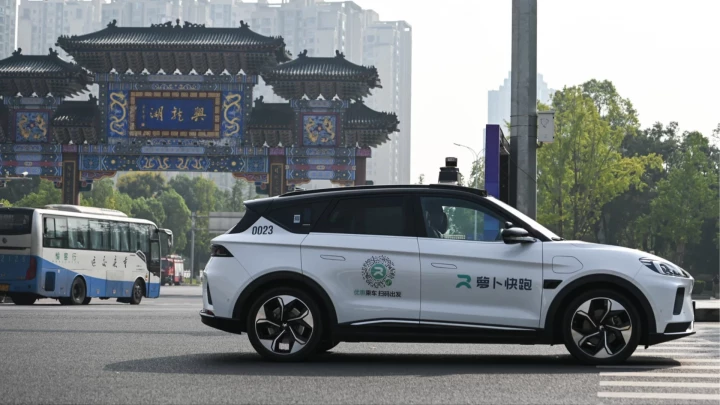1000 Fully Autonomous Robotaxis Operating in Wuhan
Self-driving vehicles are revolutionizing urban transport worldwide, and China's central metropolis, Wuhan, is at the forefront of this technological race. The city has an ambitious goal to become the world's first fully driverless city, and this endeavor is already yielding impressive results.

Baidu Apollo Go: Leading the Self-Driving Revolution
The primary developer behind Wuhan's autonomous taxi service is Baidu, one of China's leading tech giants. Through their Apollo Go platform, Baidu has established a robotaxi fleet that is already operational in Wuhan and other cities like Chongqing.
Apollo Go began commercial operations in August 2022 and has expanded rapidly since then. The fleet currently consists of approximately 500 vehicles, with plans to increase this number to 1000 by the end of 2024. This expansion highlights the confidence in the technology and the growing demand for the service.
Advanced Technology for Safe Navigation
Baidu's autonomous vehicles are designed to navigate complex urban environments without human intervention. They rely on advanced artificial intelligence and sensor technology. The vehicles are equipped with features including:
- LiDAR (Light Detection and Ranging) sensors for 3D mapping of the environment
- Cameras for processing visual information
- Radar systems for detecting moving objects
- GPS for precise positioning
Together, these systems enable the vehicles to interpret their surroundings in real-time and make decisions for safe navigation.
Wuhan: The Hub for Autonomous Taxis
Wuhan is rapidly becoming a major hub for autonomous taxis, also known as robotaxis. These vehicles operate across a large area of the city, approximately 3000 square kilometers (around 1160 square miles), which is significantly larger than the 816 square kilometers (around 315 square miles) covered by Waymo in the US.
User Experience
Using the service is simple: passengers can hail a robotaxi via a mobile app, similar to traditional ride-hailing services. A unique feature requires users to enter the last four digits of their phone number on a touchscreen to unlock the vehicle.
Affordable Prices
One of the most attractive aspects of the service is its low cost. A ride can start for as little as 4 yuan (approx. $0.55), compared to the starting fare of 18 yuan (approx. $2.50) for traditional taxis. This pricing strategy has significantly contributed to the service's rapid adoption among residents.
Technology and Safety Considerations
Although the technology is highly advanced, challenges remain. There have been instances where vehicles encountered difficulties, such as responding incorrectly to traffic lights. To ensure safety, every trip is remotely monitored by a safety operator via 5G technology.
Performance Metrics
The performance of the Wuhan system is measured using the following indicators:
- Disengagement Rate: Number of human interventions required per 1000 km (currently ~0.1)
- Localization Accuracy: Typically <10 cm
- Object Detection Accuracy: >95% for nearby objects
- Average Travel Speed: 30-40 km/h in urban environments
- Energy Efficiency: 0.3-0.4 kWh/km
Challenges and Areas for Development
- Handling extreme weather conditions (e.g., heavy rain, fog)
- Navigating rare but critical traffic situations (e.g., accidents)
- Refining the ethical decision-making of the AI
- Managing and optimizing a larger fleet
- Integrating infrastructure (e.g., traffic lights, road markings) via V2X (Vehicle-to-Everything) communication
Public Reception and Concerns
The introduction of robotaxis has drawn mixed reactions from the public. Many appreciate the convenience and affordability, while traditional taxi drivers express concerns about job security. Questions also arise regarding the readiness of urban infrastructure and the technology's impact on the gig economy.
Future Outlook
Wuhan's aggressive push to lead in autonomous vehicle technology reflects China's broader ambitions in this field. The city aims to become one of the world's first fully autonomous urban environments.
Baidu plans to replicate this successful model in other major Chinese cities after achieving profitability in Wuhan, targeted for 2025.
Summary
Wuhan's robotaxi initiative clearly illustrates both the potential benefits and the challenges of autonomous transportation systems. As this technology continues to evolve, addressing safety concerns and considering the economic impacts on traditional transport sectors will be crucial.
Autonomous vehicles are undoubtedly a significant part of the future of transportation, and Wuhan's example can offer valuable lessons for other cities wishing to embark on a similar path.